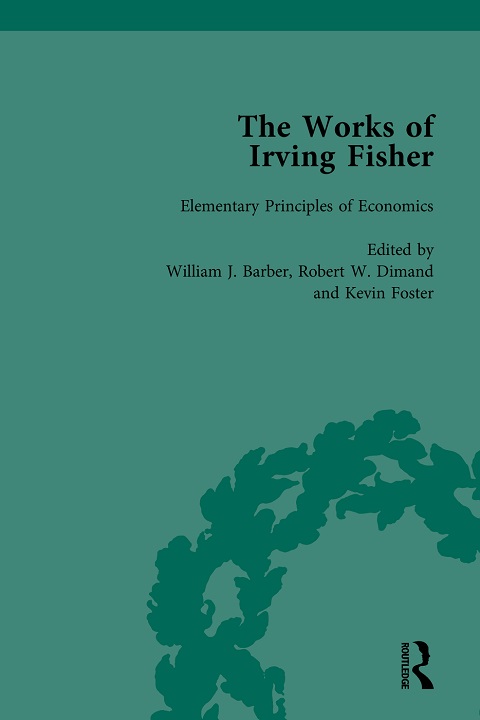
- Published: 1997
- DOI: 10.4324/9781851962259
- Set ISBN: 9781851962259
Set Contents
- General Introduction to the Edition
- Volume 1. The Early Professional Works
- Volume 2. The Nature of Capital and Income
- Volume 3. The Rate of Interest
- Volume 4. The Purchasing Power of Money
- Volume 5. Elementary Principles of Economics
- Volume 6. Stabilizing the Dollar
- Volume 7. The Making of Index Numbers
- Volume 8. The Money Illusion and Related Writings
- Volume 9. The Theory of Interest
- Volume 10. Booms and Depressions and Related Writings
- Volume 11. 100% Money
- Volume 12. Contributions to the Theory and Practice of Public Finance
- Volume 13. A Crusader for Social Causes
- Volume 14. Correspondence and Other Commentary on Economic Policy, 1930–1947
Volume Contents
-
Front Matter
-
Editorial Introduction with Selected Documents
-
Editorial Introduction By William J. Barber
-
“The Business Cycle Largely a 'Dance of the Dollar'”, December 1923 By Irving Fisher
-
“Fluctuations in Price Levels”, from The Problem of Business Forecasting, 1924 By Irving Fisher
-
"Our Unstable Dollar and the So-Called Business Cycle", June 1925 By Irving Fisher
-
"Note on a Short-Cut Method for Calculating Distributed Lags", 1937 By Irving Fisher
-
"A Statistical Relation between Unemployment and Price Changes", June 1926 By Irving Fisher
-
-
The Money Illusion
By Irving Fisher
-
Prelims
-
IA Glance at the Money Illusion
-
IIExtent of Money Fluctuation
-
IIIWhy Does Money Fluctuate?
-
IVThe Direct Harm from Inflation and Deflation
-
VThe Indirect Harm from Inflation and Deflation
-
VIWhat Can we do Ourselves?
-
VIIWhat Can Banks Do?
-
VIIIWhat Can Governments do?
-
Supplement Helps for Further Study
-
Section I: Outline of Some Plans for Stabilization
-
Section II: Research Needed
-
Section III: Reading List
-
Section IV: Quotations from Others
-
-
Index
-
-
Editorial Postscript with Selected Documents By William J. Barber